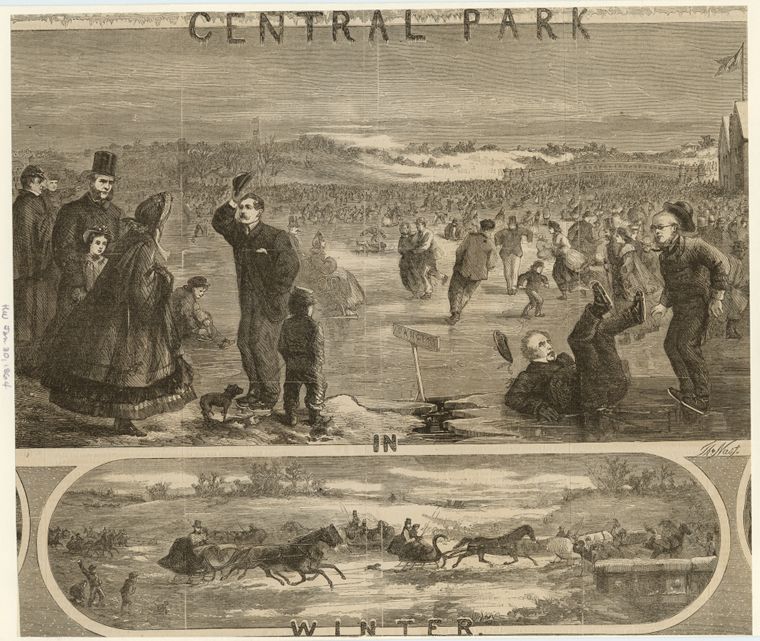Resources
Visit Homeschool History to explore resources related to this podcast.
Transcript
Ray Notgrass: On today’s Exploring History podcast, I’ll tell the story of someone who overcame poverty, prejudice, and many other hardships to become an international star. I’ll tell the story of Mabel Fairbanks.
Titus Anderson: [music in background] Welcome to Exploring History with Ray Notgrass, a production of Notgrass History.
Ray Notgrass: I’m Ray Notgrass. Thanks for listening.
I love stories of people who overcome adversity, hardship, and impossible odds, to achieve something great. Such stories inspire me. I think, “If those people can overcome such difficulties, I should be able to achieve something with all the advantages I have.” The story I want to tell you today is about a woman who overcame numerous hardships to become an international ice skating star and a teacher to some of the world’s premier ice skaters.
Mabel Fairbanks was born in 1915 in Jacksonville, Florida. She was black with some native American heritage also. Living in poverty and in a society marked by racial prejudice, Mabel accompanied her older brothers and sisters in moving to New York City. A woman noticed her sleeping on a park bench and invited her to be a nanny for her children. From the woman’s apartment, Mabel noticed people ice skating in Central Park, and she became enthralled with the activity. She bought a used pair of skates for one dollar. The skates were two sizes too big, so she stuffed cotton into the toes to make them fit.
Ice skating rinks in New York did not allow black persons to enter at the time, so she skated in Central Park because it was a public place. When she saw Olympic champion Sonya Henie skate in the movie, “One in a Million,” Mabel knew that she wanted to skate. She skated on small ponds and wherever she could, largely teaching herself. Her desire to learn and practice was so intense that her uncle built a 6 foot by 6 foot rink in her room. The tiny rink was made of wood, tin, and dry ice. Finally the owner of a skating rink allowed her in, but only during the last 30 minutes of the time the rink was open during the day. Mabel caught the attention of U.S. Ladies Skating Champion Maribel Vinson Owen, who gave her some lessons and encouraged her to create her own shows. Mabel began performing at the rink after closing time and at venues in Harlem.
In the late 1940s Mabel moved to the Los Angeles area, got people’s attention, and became the teacher for the children of many Hollywood stars, such as Danny Kaye, Ricky Nelson, Dean Martin, and Nat King Cole. Then she coached and inspired up and coming skaters who would become stars in the sport, such as Tai Babilonia and Randy Gardner, Peggy Fleming, and Scott Hamilton. She skated in the Ice Capades and the Ice Follies, and she performed in numerous foreign countries. But her first love was teaching youngsters, especially inspiring African American children. She was not allowed to compete in Olympic trials, but she once commented that if she had become a major ice skating star, she would not have been able to engage in her first love, which was teaching children to ice skate.
Mabel taught until she was 79 years old. In 1997 she was the first African American to be inducted into the U.S Figure Skating Hall of Fame. Shortly after she died in 2001, she was posthumously inducted into the International Women’s Sports Foundation Hall of Fame.
What an inspirational story. What an encouragement for our children and grandchildren–and for you and me–to let nothing stop us in achieving our dreams, in using our God-given talents and opportunities to make a difference, in using our lives to bless others. I’m Ray Notgrass. Thanks for listening.
Titus Anderson: This has been Exploring History with Ray Notgrass, a production of Notgrass History. Be sure to subscribe to the podcast in your favorite podcast app. And please leave a rating and review so that we can reach more people with our episodes. If you want to learn about new homeschool resources and opportunities from Notgrass History, you can sign up for our email newsletter at ExploringHistoryPodcast.com. This program was produced by me, Titus Anderson. Thanks for listening!
Visit Homeschool History to explore resources related to this episode.
